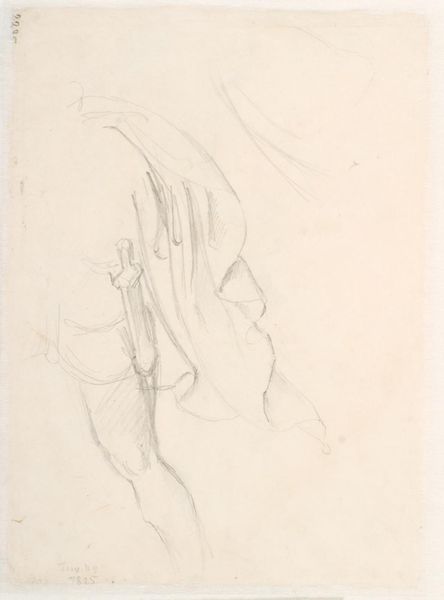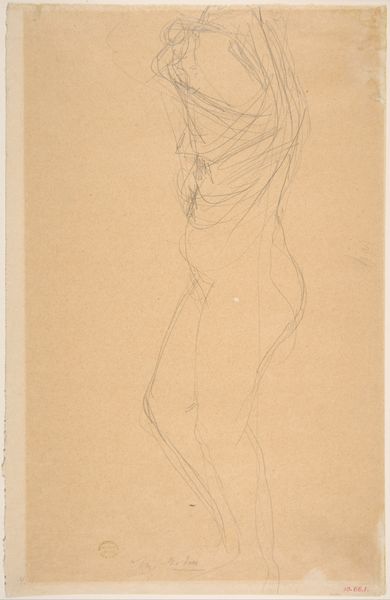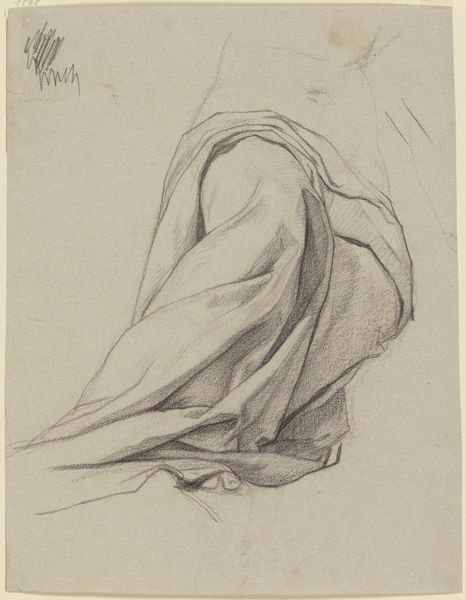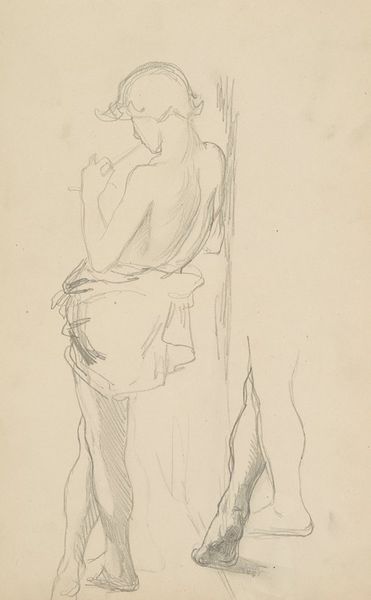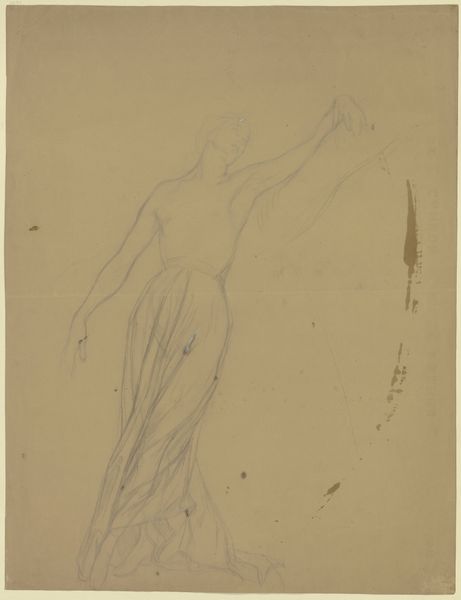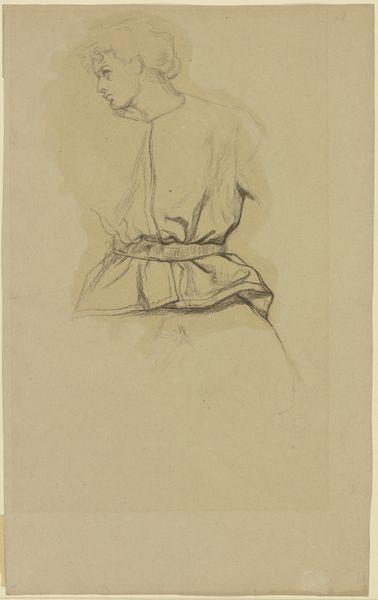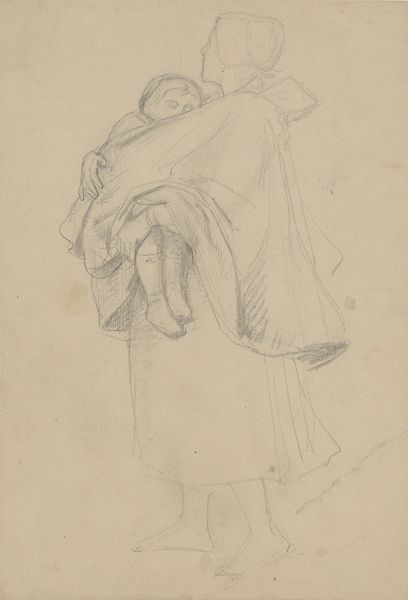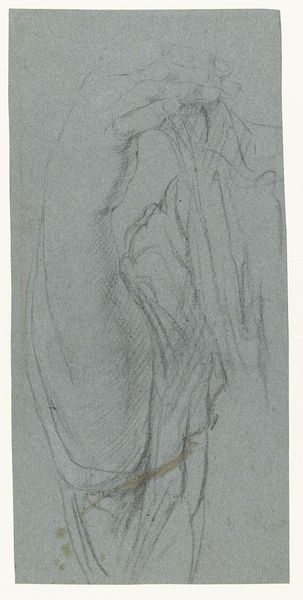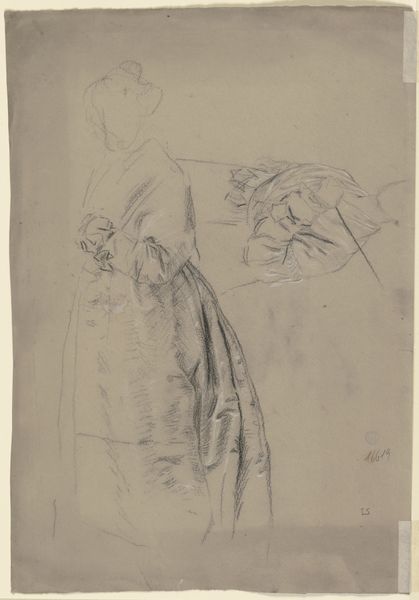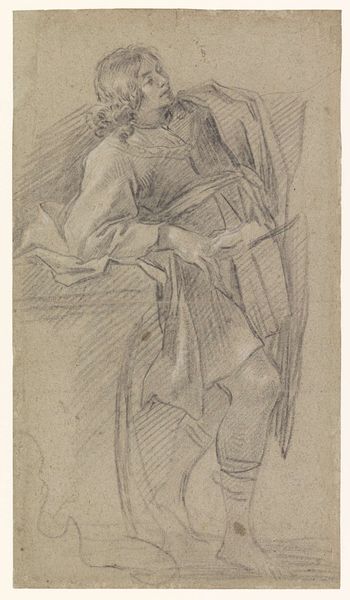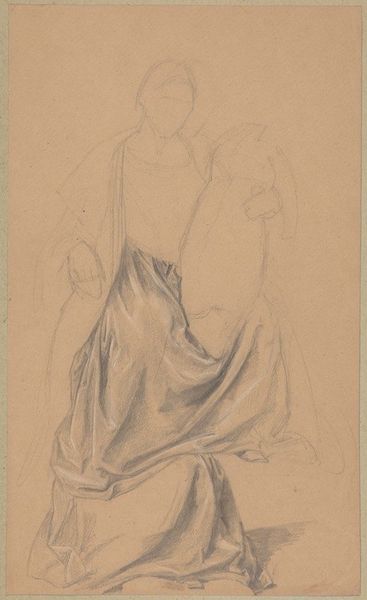
drawing, pencil
#
drawing
#
figuration
#
pencil drawing
#
pencil
#
academic-art
Dimensions: 12 1/2 x 9 1/2 in. (31.8 x 24.1 cm)
Copyright: Public Domain
Editor: This is "Study of Drapery," a pencil drawing made in 1906 by Louis-Oscar Roty. There's something ghostly and ethereal about the way the figure emerges from the page. How do you interpret this work? Curator: It's interesting you say "ghostly." Academic drapery studies like this, while seemingly technical, often hint at deeper social dynamics of visibility and representation. Consider the obscured figure; whose bodies were typically hidden or draped in this era? Was it a marker of class? Of modesty imposed upon women? Editor: I see what you mean. It feels like this drawing exists in a space between skill and symbol. You can clearly see Roty’s talent, but also perhaps his participation in the traditions and constraints of his time. Curator: Exactly! And this interplay is crucial. It is important to understand academic art within its socio-political context. Look at the precision in the folds, the controlled line work. Where might those skills be deployed outside of fine art? Consider the ways these artistic skills intersected with political messaging and portraiture that legitimized and aestheticized power. Editor: So, rather than simply appreciating it for its aesthetic value or the skill involved, we should also consider its role in reinforcing social norms and power structures. Curator: Precisely. Think about whose image, and what kinds of images, circulated at that time, and whose did not. Then think about why. Editor: This has made me realize the importance of questioning the context of art. There is more than meets the eye. Curator: Absolutely! Let's strive to create a more nuanced conversation around art.
Comments
No comments
Be the first to comment and join the conversation on the ultimate creative platform.

